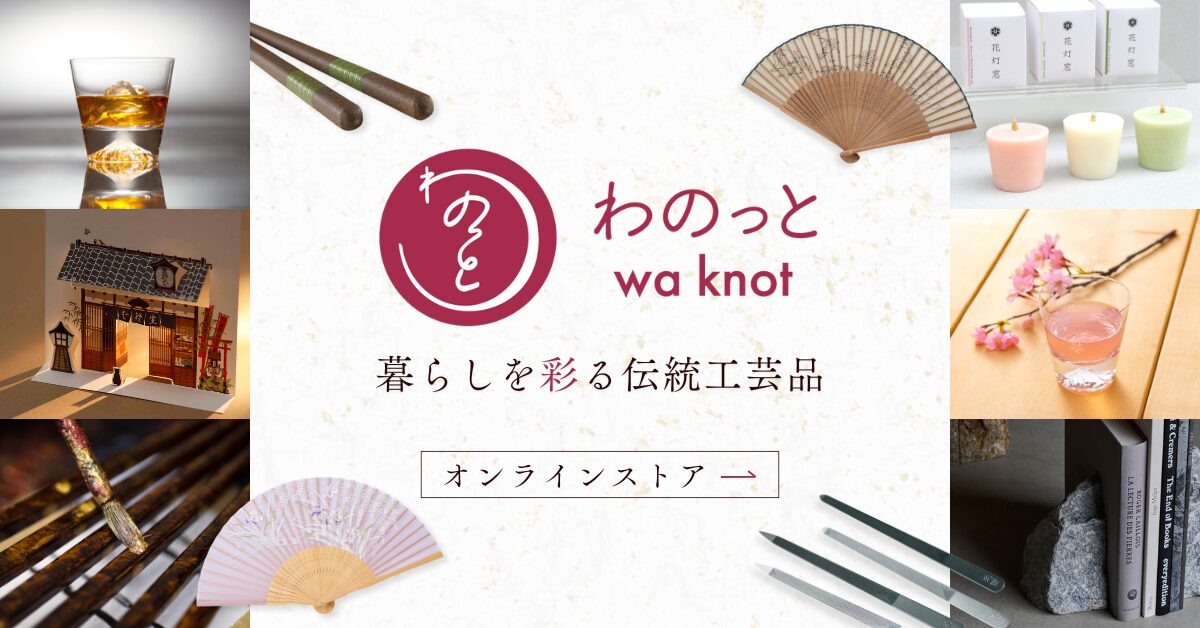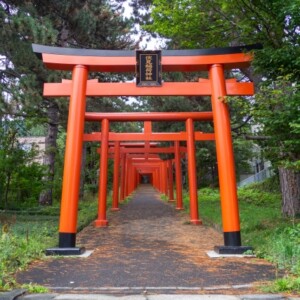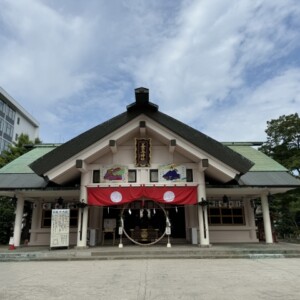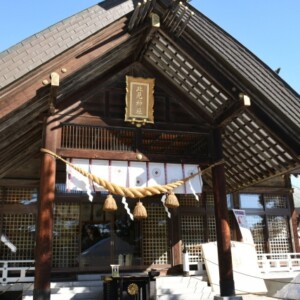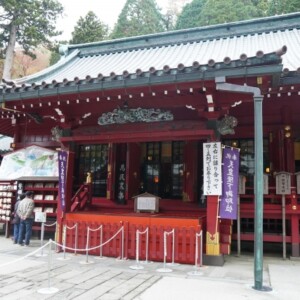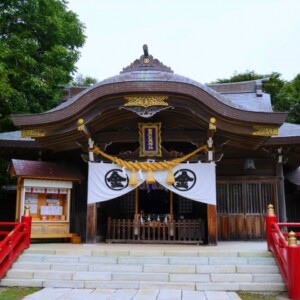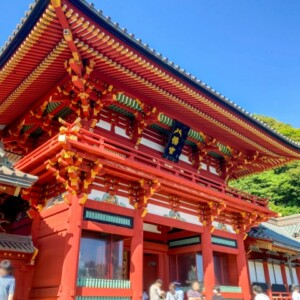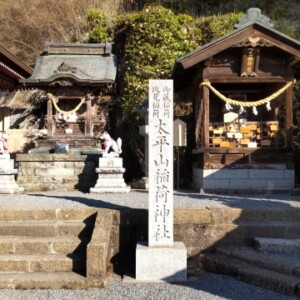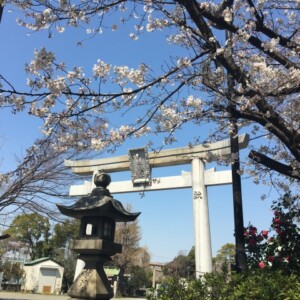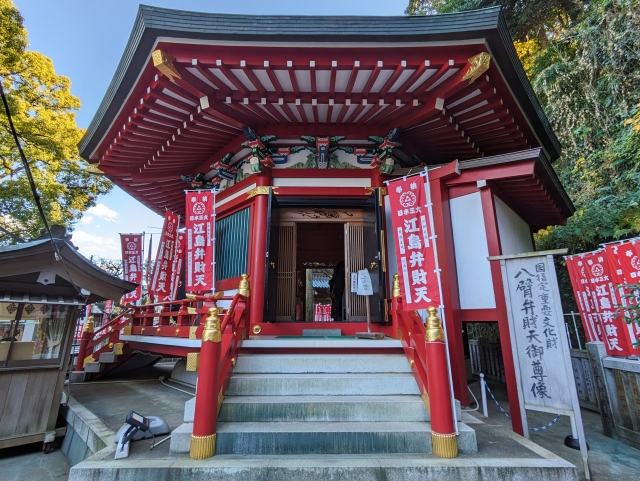
Eshima Shrine Hoyasuden|An in-depth explanation of the charm of this octagonal hall dedicated to the three great benzaitens of Japan and information on how to see the shrine
The vermilion octagonal hall “Bonan-den” built within the precincts of Eshima Shrine is a sacred place dedicated to the eight-armed Benzaiten and Myone Benzaiten, two of the three most famous Benzaiten in Japan. This beautiful building, modeled after the Yumeden Hall of Horyuji Temple, attracts many worshippers who come to pray for the improvement of performing arts and music and for the protection of their good fortune.
Outline and basic information about Eshima Shrine Hoyasuden
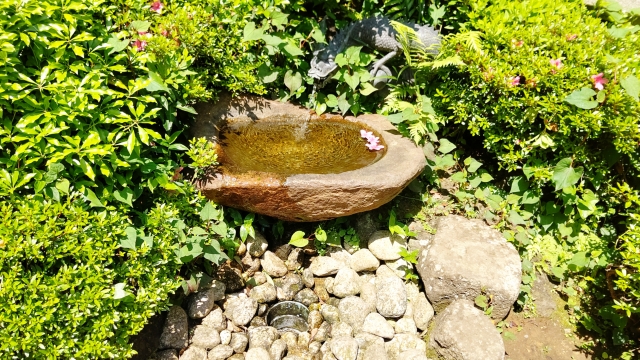
The Hoyasuden Hall, built adjacent to the Hengu shrine of Ejima Shrine, is the focal point of the Benzaiten worship at Ejima Shrine. This octagonal hall houses a precious statue of Buddha, one of the three most revered Benzaiten statues in Japan, and is visited by many worshippers who come to pray for the improvement of their performing arts and monetary fortune.
History and Origin
The history of Hoyasuden dates back to the Kamakura period. When Minamoto no Yoritomo established the shogunate in Kamakura, he ordered Bunkaku Shonin to build the temple to pray for Fujiwara no Hidehira of Oshu to be subdued, and it is written in Azuma Kagami (Azuma Kagami) that he made the priest pray for 21 days. In the Edo period (1603-1867), Benzaiten was called Eshima Benten or Eshima Myojin, and took its present form with the separation of Shinto and Buddhism in the Meiji period (1868-1912).
Eshima Shrine is one of the three major Benzaiten shrines in Japan, along with Chikubushima and Aki no Miyajima on Lake Biwa in Omi. The belief in Benzaiten has long been rooted in the area, and in the Kamakura period (1185-1333) it was a holy place where warlords and priests prayed, and Tokugawa Ieyasu also made a pilgrimage to pray before becoming a barbarian general.
Architectural Features and Structure
Moyanden is a beautiful building, said to have been modeled after Horyu-ji’s Yumeden, and its distinctive octagonal shape is impressive. The current building was renovated in 2015, and its vermilion-colored exterior creates a beautiful sight against the blue sea and sky of Enoshima.
The architectural style of octagonal hall has special significance in Buddhist architecture, and like the Horyuji Muden, it has been adopted as a form to express a sacred space. The interior of Bonganden is filled with a sacred atmosphere, allowing visitors to face Benzaiten in silence.
Highlights and Features of Eshima Shrine Hoyanden
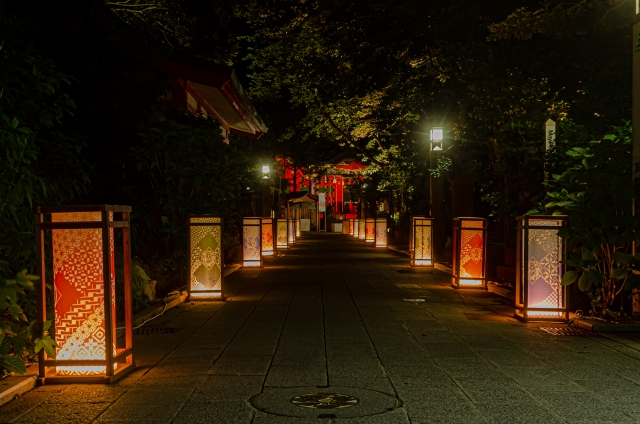
The main attraction of Hoyasuden is the two precious statues of Benzaiten (Benzaiten with eight arms), designated as a national important cultural property, and Myone Benzaiten, designated as an important cultural property by Fujisawa City. These Buddhist statues, as Benzaiten in different forms, are each believed to have unique benefits.
8-armed Benzaiten (National Important Cultural Property)
The eight-armed Benzaiten was created in the early Kamakura period and represents Benzaiten as a god of war with eight arms and weapons. During the Edo period (1603-1867), the eight-armed Benzaiten was widely worshipped by samurai and common people alike as a god of victory and luck.
This Benzaiten is said to have been dedicated by Minamoto no Yoritomo, and is believed to grant the power to overcome odds and difficulties. Benzaiten, with its aspect as a god of war, is believed by many people even today to be a god of victory in various matters such as entrance examinations, employment, and success in business.
Myouon Benzaiten (Important Cultural Property designated by Fujisawa City)
Myouon Benzaiten is a seated nude statue holding a biwa (Japanese lute). It is said to have all the symbolism of a woman and is renowned as a masterpiece of the Kamakura period. This Benzaiten is also called “Naked Benzaiten,” and is revered as a god of music and the performing arts for its beautiful female form.
Holding a biwa in her two hands, she has become the beautiful Benzaiten seen here and there today, and is worshipped by many women, including those involved in music and the performing arts, as the god of beauty and wisdom. Its beautiful appearance attracts viewers, and it is highly regarded as a work of great artistic value.
Statues of Fifteen Children and Valuable Treasures
In addition to the statue of Benzaiten, there are 15 other statues of children enshrined in the Moyasuden Hall, which houses treasures attributed to Minamoto no Yoritomo, Hojo Masako, Ambassador Kobo, and Sugiyama Kazuichi (a famous Buddhist priest), among others. Of particular note are the “Imperial Seal of Eshima Daimyojin” given by Emperor Go-Uda and the “Goma Ash Benzaiten Statue” made from the ashes of a goma ritual performed by Kobo-Daishi at the Oiwaya.
These treasures are carefully preserved as proof of Eshima Shrine’s long history and the faith of many famous people. Photography is not allowed inside the hall, so it is important to visit the shrine to experience its solemnity firsthand.
Visiting Guide
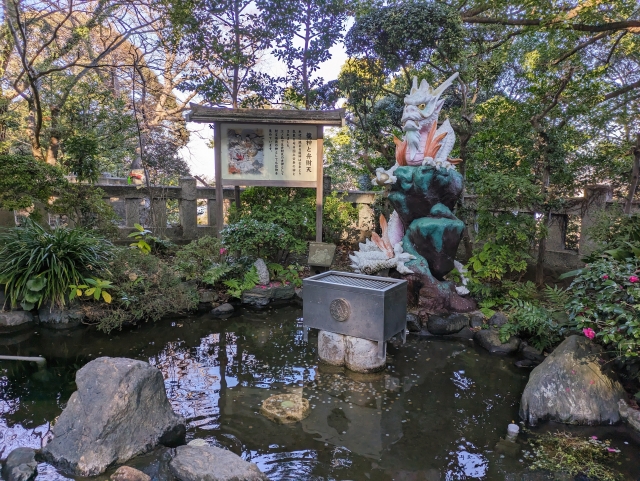
At Eshima Shrine’s Hoan-den Hall, you can view the sacred statue of Benzaiten up close and personal. By maintaining silence in the hall and worshipping with all your heart, you will receive the blessings of Benzaiten.
Worship Etiquette and Manners
When visiting BOYONDEN, visitors must first pay the entrance fee before entering the hall. Photography is not allowed inside the hall, so please refrain from taking pictures with your camera or smartphone. It is important to calm your mind in the quiet space and face the statue of Benzaiten.
When visiting the temple, place your hands together and pray silently. It is common to pray to the eight-armed Benzaiten for good luck in winning and overcoming difficulties, and to the Myone Benzaiten for improvement in the arts, beauty, and wisdom. At the entrance of the shrine, there is a “White Snake God of One-Month Wishes (500 yen for the first offering)” where visitors can write a single letter of their wish on a small snake doll and pay it to the shrine.
Annual and Seasonal Events
Various festivals are held throughout the year at Eshima Shrine, and the Moyasuden plays a central role in these events. The events related to Benzaiten, in particular, attract large numbers of worshippers and are held with great fanfare.
During the spring and fall festivals, the Moyasuden is visited by many more worshippers than usual. Special prayer services are also sometimes held for people involved in the music and entertainment industry, who come to seek the blessings of Myouon Benzaiten for the improvement of the performing arts. For a detailed schedule of events, we recommend checking the official Eshima Shrine website.
Red Seal and Charm Information
At Eshima Shrine, red seals are available in 10 types at the red seal office near the shrine building. A red seal for Benzaiten, a deity associated with the Bonan-den shrine, is also available, and is popular among many visitors as a commemorative seal for their visit to the shrine.
As for good luck charms, the cute Biwa-mamori, a biwa-shaped charm depicting Benzaiten, is highly recommended. The charm is said to bring good fortune and improve the performing arts. There are also a wide variety of other good luck charms unique to Eshima Shrine, such as the Ryujin-mamori and Hakuryu-mamori. These amulets are awarded at the shrine office near Henzumiya Shrine, and many visitors seek them out in conjunction with their visit to Muyasuden.
Access and Usage Information
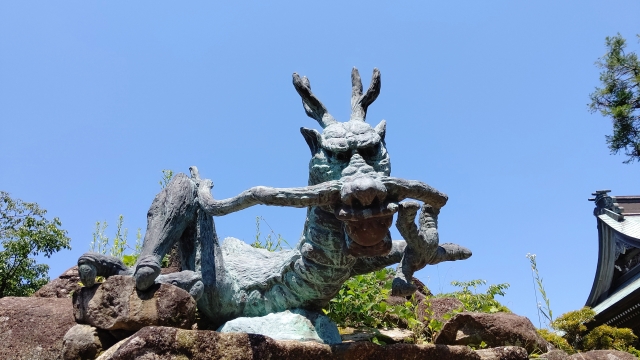
Eshima Shrine Hoyasuden is located next to Hengu Shrine at the entrance to Enoshima and is easily accessible from all stations. It has become a popular spot for many tourists to visit as a base for sightseeing in Enoshima.
Transportation Access
Eshima Shrine Hoyasuden is conveniently accessible by train. Katase Enoshima Station on the Odakyu Line, Enoshima Station on the Enoshima Electric Railway Line, and Shonan Enoshima Station on the Shonan Monorail Line *A 15-23 minute walk from each station.
The closest station is Katase Enoshima Station on the Odakyu Line, famous for its distinctive building resembling a dragon palace. From the station, cross the Enoshima Benten Bridge, pass through the vermilion torii gate, and continue along Nakamise-dori to reach the precincts of Eshima Shrine. The shrine is located right next to Hengu Shrine, so you will have no trouble finding your way there.
If you are coming by car, it takes about 40 minutes from the Chigasaki Kaigan IC of the Shin-Shonan Bypass. There are several pay parking lots around Enoshima, and since crowding is expected during the tourist season, public transportation is recommended.
<Address> 2-3-8 Enoshima, Fujisawa City, Kanagawa Prefecture, 251-0036
Hours of Operation, Fees, and Parking Information
Hours of the BOYONDEN are from 8:30 a.m. to 4:30 p.m. The temple is open all year round. The temple is open year-round, so you can visit the statue of Benzaiten at any time of the year.
Admission is very reasonable: 200 yen for adults, 100 yen for junior high and high school students, 50 yen for elementary school students, and free for children under elementary school age (group discount for groups of 25 people or more). For this fee, it is a very worthwhile experience to be able to see the nationally important cultural asset, Hachi-o Benzaiten, and the Fujisawa City important cultural asset, Myone Benzaiten, up close and personal.
There is no dedicated parking lot for Eshima Shrine, but there are several pay parking lots in the Enoshima area. Since the parking lots are often full during the tourist season and holidays, we recommend that you arrive early or consider using public transportation. Parking fees and hours of operation vary by parking lot, so it is best to check in advance.
Reference sites
Eshima Shrine Official Website: http://enoshimajinja.or.jp/
Fujisawa City Tourism Official Website: https://www.fujisawa-kanko.jp/


